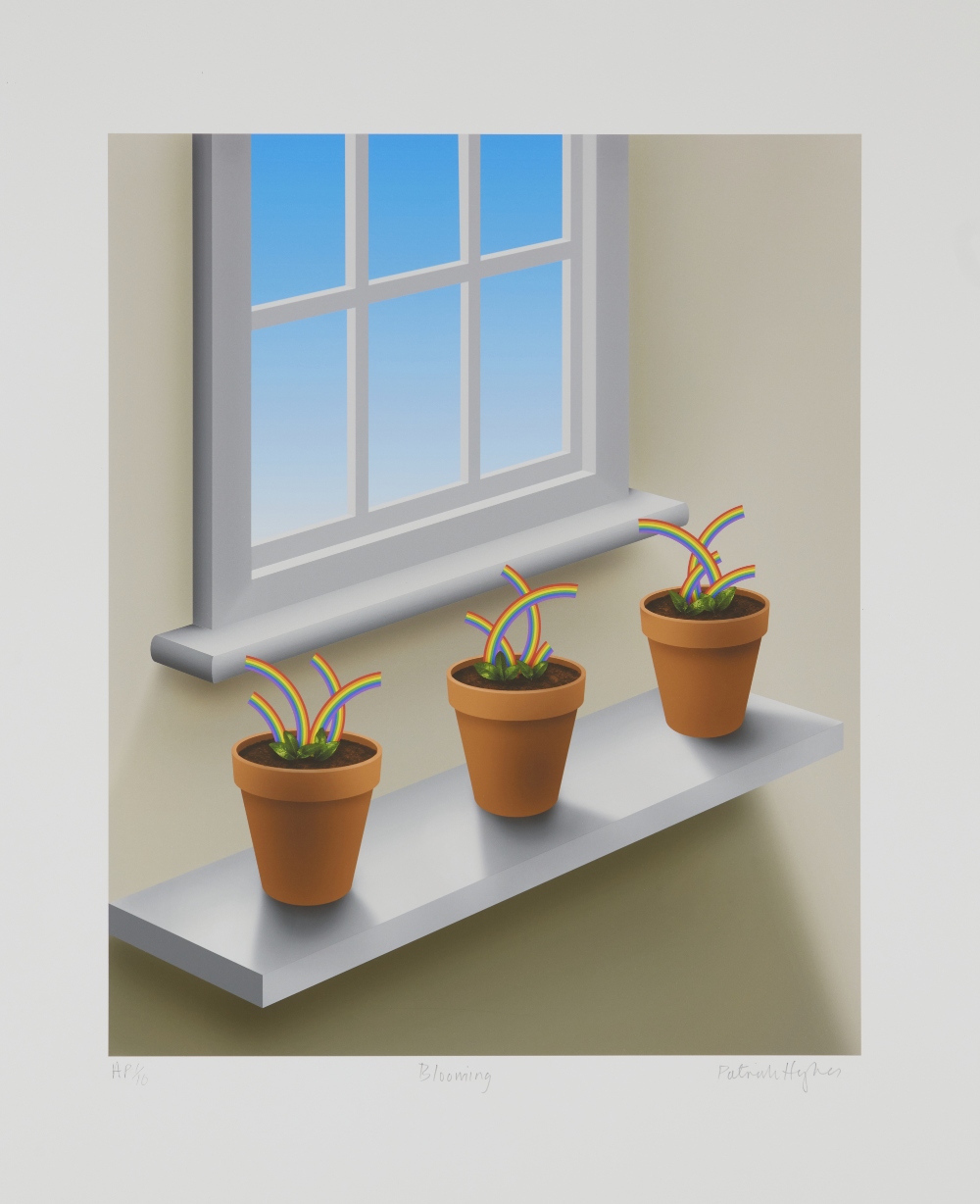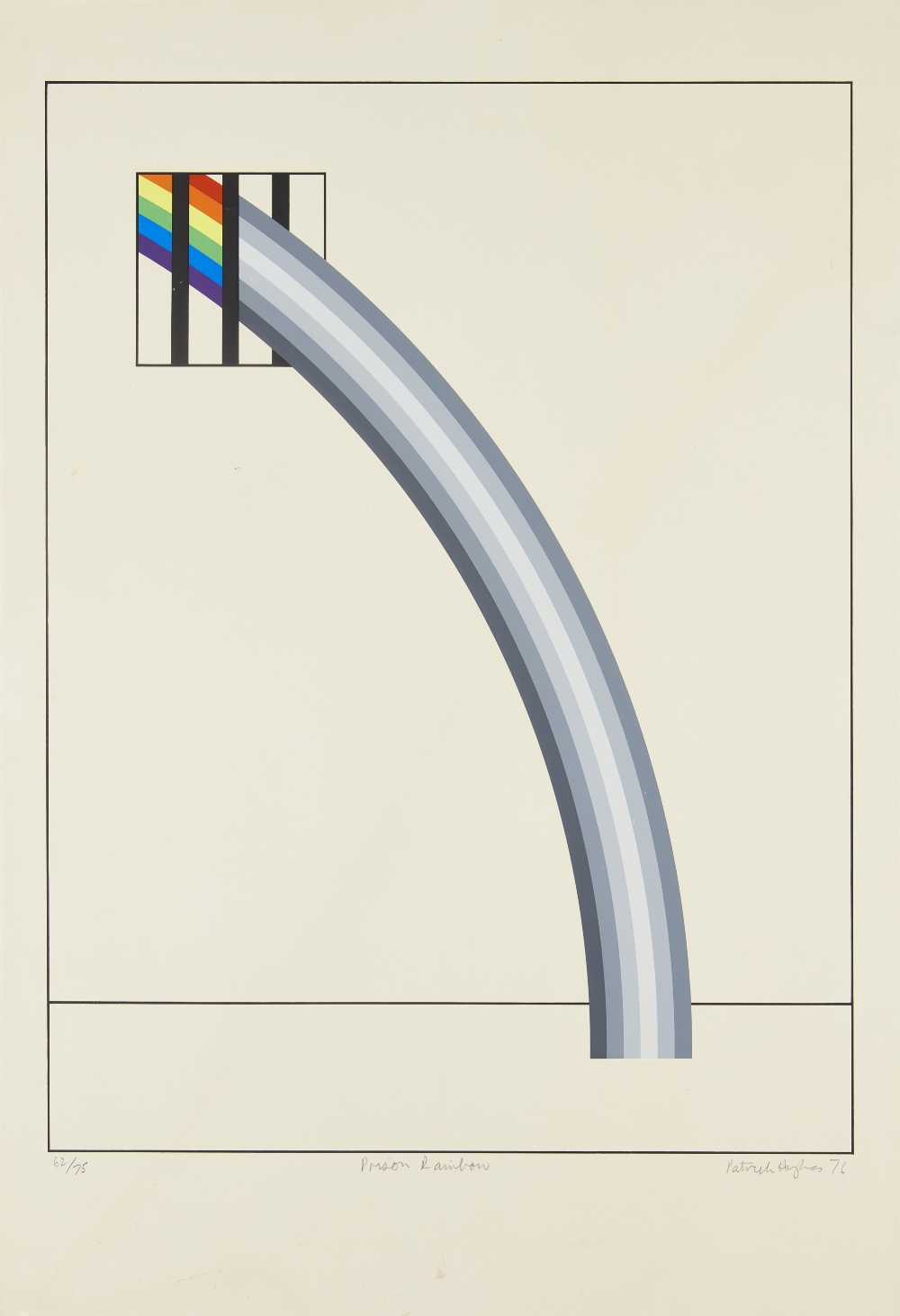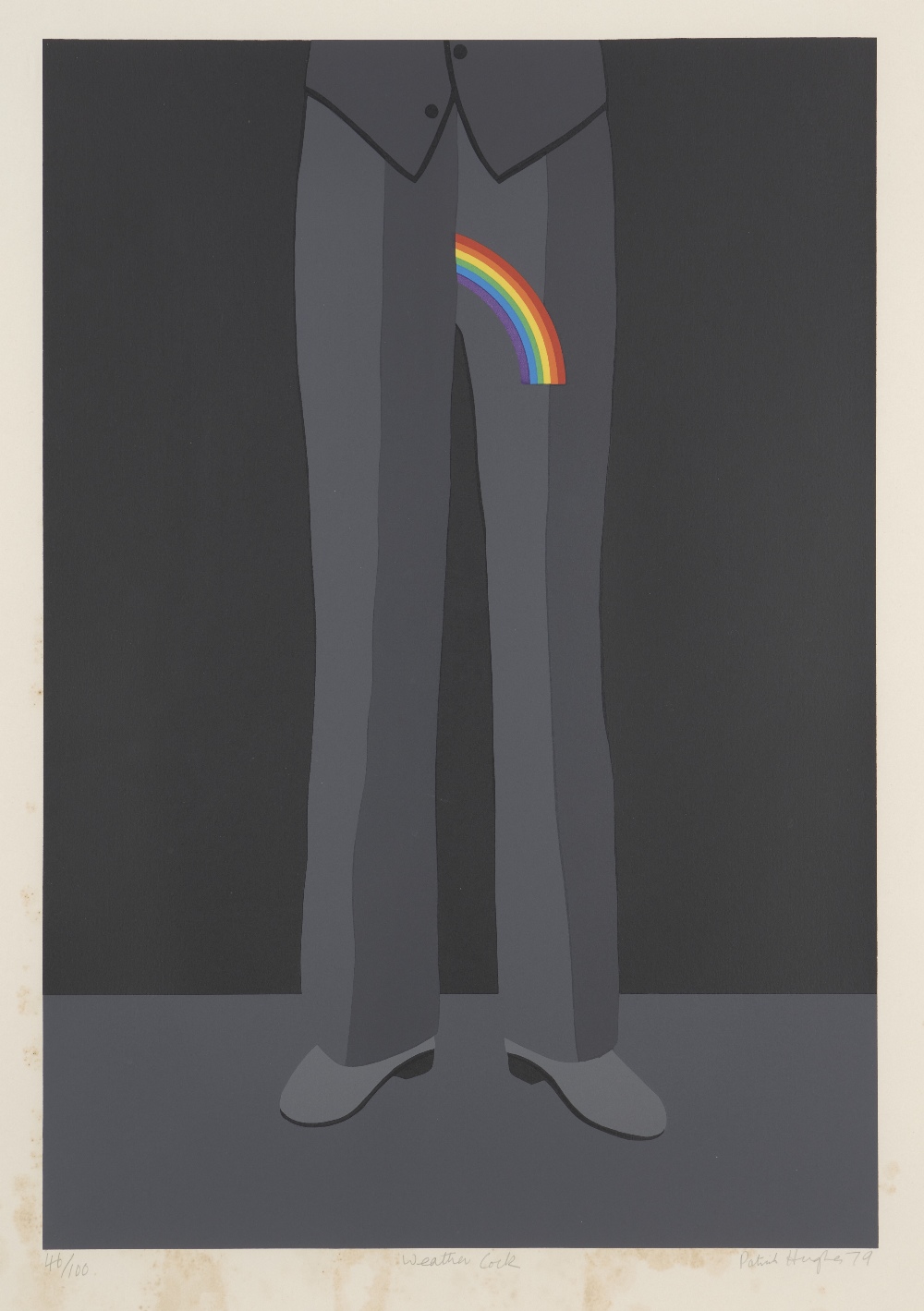‘Reversepective Art’ - in which three-dimensional relief paintings create an optical illusion that its protruding areas actually recede into the perspectival distance and vice versa - was created by the British artist Patrick Hughes and showcased for the first time in his 1964 exhibition ‘Sticking-out Room’.
Born in 1939, Hughes is a legend of British Pop Art and is praised as a pioneer of optical- and geometric abstract art. He was born in Birmingham and educated in Kingston upon Hull before attending Leeds College of Art.
Lot 169: Patrick Hughes, British b.1939, Blooming
His debut solo show at Portal Gallery in 1961 was the very first of its kind - a solo Pop Art show lending a real gravitas to this young and bold artistic movement (still unnamed at the time). Three years later, ‘Sticking-out Room’ cemented Hughes’ approach to composition with a focus on playful narratives, and the first revespective works took centre-stage.
Reverspective requires viewers to question their experiences of perspective and image-viewing, and encourages us to move around the artwork physically to get the most we can out of the three-dimensional effect. Viewers must engage with a new version of reality when looking at Hughes’ reverspective works - what “should” come towards us vanishes away, what typically rises, falls, and turning left becomes turning right. For Hughes, interacting with these optical illusion works goes beyond a perspectival game, but suggests something deeper about the nature of moving through the world - “If lookers and see-ers experience the paradox and reciprocity of the world and themselves, they get a sense of the flow of life.”
Lot 167:Patrick Hughes,British b. 1939- Prison Rainbow, 1976
The artist has been inspired by the geometric designs of Paul Klee and the surrealist compositions of René Magritte, referring to himself as a “surrealist sympathiser, I have no faith in realism, or indeed reality.” The humour of Magritte, in particular, was formative for Hughes, whose work incorporates a spirited impishness which became a key characteristic of British Pop Art. The lack of personal narrative (focussing on universal themes rather than biographical chapters from his own life) is intentional, as Hughes wants his art to be immediately accessible for every viewer regardless of their knowledge of his life.
As well as his reverspective compositions, Hughes has found great success with his print designs, particularly those featuring rainbows. Works by Hughes are held in the collections of Tate Modern, The British Library, and the Victoria & Albert Museum, and the four books produced by the artist have been sold around the world.
Lot 168: Patrick Hughes, British b. 1939- Weather Cock, 1979
Hughes’ originals and prints come to market with relative frequency (his editions often exceed 100) and are greatly coveted by collectors interested in the development of British contemporary art. Fans of Hughes’ work are fortunate that his prices are approachable - for prints in particular. Five prints by the artist are coming to Roseberys this June as part of the Prints & Multiples sale - three screenprints, an archival pigment print, and a giclée print, all signed by the artist - with low estimates starting at just £200.







